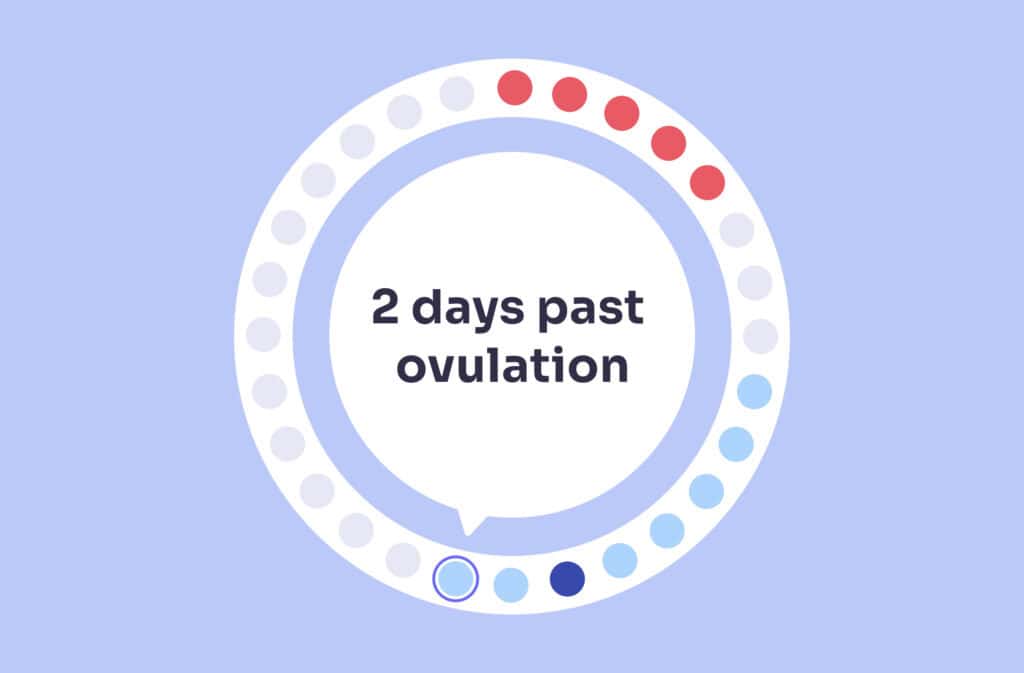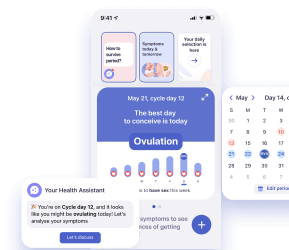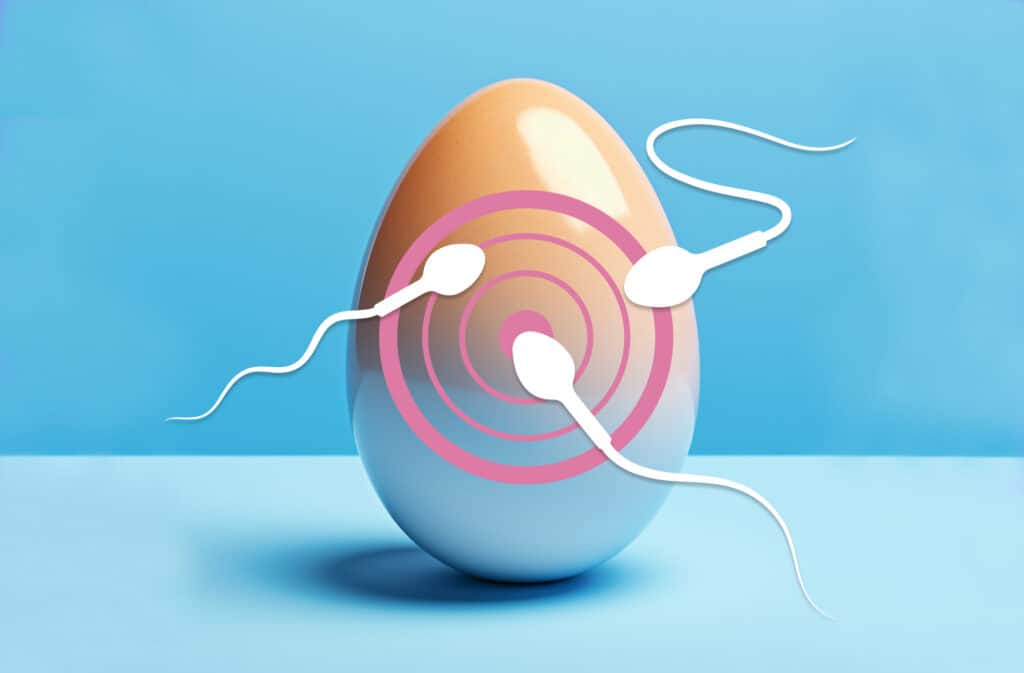Femia > Health Library > Getting Pregnant > Trying to conceive > 2 DPO: What to expect, and how to tell if you’re pregnant
2 DPO: What to expect, and how to tell if you’re pregnant

- Updated Feb 27, 2025
- Published
CRAFTED BY HUMAN
Crafted by human At Femia, we provide accurate and up-to-date information at every stage of your journey, from trying to conceive, pregnancy and postnatal support. All content is created by a real person based on in-depth research and own professional experience. Femia ensures that you will receive expert advice, strict accuracy and a personalized approach from our authors/medical experts. Learn more about our editorial policy.
FACT CHECKED
Fact checked At Femia Health, we maintain the highest standards of editorial excellence in delivering content focused on helping you conceive, guiding you through pregnancy, and supporting you postpartum. Explore our content review principles to learn how we ensure the accuracy and quality of our health and lifestyle tips for every stage of your journey.
At 2 DPO, you’re still at the early stage of your luteal phase. During this day:
- The fertility window is closed, but a fertilized egg may be traveling to the uterus.
- Hormone levels continue changing, with progesterone and estrogen rising.
- Common symptoms like mild cramping or mood swings are due to normal hormonal fluctuations, not pregnancy.
- It’s too early for definitive pregnancy symptoms or accurate test results.
When trying to conceive, stepping into your two-week wait (TWW) can be both exciting and tiresome. These two weeks can feel like they go on forever as you expect your hopefully missed periods and the awaited pregnancy. Luckily, you can reduce the tension by equipping yourself with the right knowledge.
To help you get through your two-week wait seamlessly, we prepared an article series covering every day post ovulation. These articles can help you make your TTC journey nerve-free by helping you understand what happens in your body every day and hint at possible early pregnancy signs to look out for.
In this article, as a part of the series, we’re going to explore 2 DPO. After reading, you’ll learn what happens to you today, what symptoms might be there, and whether it is possible to tell if you’re pregnant yet 2 days past ovulation.
➡️ Read other Femia guides in this series:
- 1 DPO: What to expect, and how to tell if you’re pregnant
- 3 DPO: What to expect, and how to tell if you’re pregnant
- 4 DPO: What to expect, and how to tell if you’re pregnant
- 5 DPO: What to expect, and how to tell if you’re pregnant
- 6 DPO: What to expect, and how to tell if you’re pregnant
- 7 DPO: What to expect, and how to tell if you’re pregnant
- 8 DPO: What to expect, and how to tell if you’re pregnant
- 9 DPO: What to expect, and how to tell if you’re pregnant
- 10 DPO: What to expect, and how to tell if you’re pregnant
- 11 DPO: What to expect, and how to tell if you’re pregnant
- 12 DPO: What to expect, and how to tell if you’re pregnant
- 13 DPO: What to expect, and how to tell if you’re pregnant
- 14 DPO: What to expect, and how to tell if you’re pregnant
- 15 DPO: What to expect, and how to tell if you’re pregnant
- 16 DPO: What to expect, and how to tell if you’re pregnant

What does 2 DPO mean?
2 DPO is the second day after you had your ovulation. It’s the continuation of the luteal phase of your menstrual cycle, which is a crucial process for a successful pregnancy.
2 days past ovulation your fertility window is firmly closed now and your TTC journey might be getting into its full swing if the egg was fertilized.
Why track 2 DPO symptoms if trying to conceive?
In a balanced cycle (28 days), ovulation typically occurs around the 14th day. Then follows the luteal phase, which typically lasts for 12-14 days (though a timeframe between 10 to 17 days is considered a norm) and prepares your body for pregnancy. These 12 to 14 days are known as DPO. Throughout them, the lining of your uterus thickens and hormones kick in to create the perfect environment for a fertilized egg to implant (attach to the uterine wall) and further pregnancy development.
Tracking your symptoms through this entire period can offer several benefits, including:
- More accurate tracking of your cycle and ovulation;
- Better understanding of internal changes during different cycle phases;
- An opportunity to detect cycle irregularities.
In the long run, tracking and understanding your DPO is the key to determining your fertility window and maximizing your chances of conception. It’s also an excellent opportunity to reduce emotional swings during your luteal phase by reducing the unknown factors.
👉Find out more: How long after sex does implantation occur: Understanding the timeline
What happens 2 days after ovulation in your body
On day two post ovulation, the released egg is no longer available for fertilization and continues traveling through the fallopian tube. If it isn’t fertilized, it will start reabsorbing in your body around this time. However, if it is fertilized, it forms a zygote that slowly continues moving toward the uterus during 2 DPO. Once it gets there, the fertilized egg will hopefully implant somewhere between 6 and 10 DPO.
Although the egg might have already been fertilized, you won’t likely feel any different at 2 DPO. Still, this doesn’t mean that nothing changes inside your body.
The luteal phase of your menstrual cycle triggers certain hormonal changes. Starting from 1 DPO, your luteinizing and follicle-stimulating hormones drop. The follicle that has ruptured and released the egg closes, creating a corpus luteum—a temporary set of cells formed on the ovary after ovulation that appears to create a healthy environment in your uterus for healthy fetus growth.
While luteinizing and follicle-stimulating hormones decrease, progesterone (which is produced by the corpus luteum) increases. Your estrogen levels should also increase during this phase.
All these inner changes continue at 2 days past ovulation. The changing hormonal level stimulates additional pre-pregnancy changes, such as thickening uterine lining and cervical mucus.
Common 2 DPO symptoms
It’s natural for TTC women to pay close attention to their feelings and symptoms during the two-week wait as they are hoping to get pregnant. However, 2 DPO is generally too early for these symptoms to show.
Women in their early luteal phase days often feel not much differently than on any other normal day. This doesn’t mean that you can’t feel any symptoms at all.
There might be some mild symptoms that could get you wondering what’s going on in your body. Though these symptoms might resemble early pregnancy signs, they are typically normal post-ovulation attributes, such as:
- Irritability and mood swings;
- Breast sensitivity;
- Bloating;
- Light cramping;
- Increasing basal body temperature;
- Changing discharge;
- Back and pelvic pain.

These symptoms might continue throughout the TWW. Their duration and intensiveness can vary from one woman to another. And it’s also natural not to experience any symptoms at all.
In some cases, you may also feel tired. Severe tiredness is a common early sign of pregnancy, which often shows during early weeks. You may also experience it at 2 DPO.
Additionally, it’s normal to experience a 2 DPO headache, which is frequently caused by peaking estrogen. However, like other symptoms, this one is often just a result of changing hormonal levels.
2 DPO symptoms if pregnant
If you are trying to conceive, we understand your desire to notice pregnancy signs as early as possible. Especially during the two-week wait, many women are waiting for these signs with enthusiasm, some even feeling that something has already changed.
While your gut feeling might be right sometimes, 2 DPO is still early to notice real pregnancy signs. The tangible pregnancy symptoms typically aren’t prominent until the egg is implanted and settled, which usually doesn’t happen before at least 6 days after fertilization.
Unfortunately, early into your luteal phase, 2 DPO symptoms ending in BFP (big fat positive on a pregnancy test) might be just regular post-ovulation signs.
👉Find out more: When you feel ovulation pain is it too late? Timing, conception, and what it means for pregnancy
Can I take a 2 DPO pregnancy test, or is it too early?
Okay, if it’s too early to notice any prominent symptoms, you may feel tempted to check if your pregnancy goal is achieved by taking a test. While this is a natural desire for women in their TTC journeys, taking early pregnancy tests isn’t recommended.
The primary reason to wait is the accuracy of the result. Trying to confirm pregnancy during the early days of your luteal phase can lead to false-negative, as well as false-positive, results. This can drag you into a stressful guessing game of whether you can trust the test result. So generally it’s a good idea to wait and not take your 2 DPO pregnancy test yet.

Tips for managing symptoms and staying positive at 2 DPO
Since many females don’t experience tangible symptoms at 2 DPO, there is often no need to take special precautions to address these symptoms. However, there are basic self-care tips that can help you make the two-week wait period less stressful and better prepare for your future pregnancy:
- Keep busy throughout the entire TWW. This can help you not to get overly obsessed with early pregnancy signs and minimize your stress level.
- Build a solid support network. The period of wait can give you a real emotional rollercoaster with lots of excitement and hopes but also some fears, concerns, etc. You may find it easier to get through this if you find support in your partner, family, friends, or professionals. Solid emotional support can help you reduce the tension.
- Use stress-busting techniques that work for you. Experts recommend trying regular physical activity (preferably low-impact, such as yoga), communication with people, mindfulness practices, meditations, journaling, etc.
- Actively prepare for pregnancy. Even though you may not know you’re pregnant yet at 2 DPO, you might be, which is why you should consider having a lifestyle that promotes healthy pregnancy now. This could mean quitting alcohol and smoking, taking folic acid supplements, reconsidering your diet to make it more nutritious and healthy, and so on.
- Continue tracking your symptoms at each DPO. This can help you understand your TTC journey better, make more informed decisions, and minimize stress. Also, don’t hesitate to see your doctor if you notice any unusual symptoms.
➡️ Read other Femia guides in this series:
- 1 DPO: What to expect, and how to tell if you’re pregnant
- 3 DPO: What to expect, and how to tell if you’re pregnant
- 4 DPO: What to expect, and how to tell if you’re pregnant
- 5 DPO: What to expect, and how to tell if you’re pregnant
- 6 DPO: What to expect, and how to tell if you’re pregnant
- 7 DPO: What to expect, and how to tell if you’re pregnant
- 8 DPO: What to expect, and how to tell if you’re pregnant
- 9 DPO: What to expect, and how to tell if you’re pregnant
- 10 DPO: What to expect, and how to tell if you’re pregnant
- 11 DPO: What to expect, and how to tell if you’re pregnant
- 12 DPO: What to expect, and how to tell if you’re pregnant
- 13 DPO: What to expect, and how to tell if you’re pregnant
- 14 DPO: What to expect, and how to tell if you’re pregnant
- 15 DPO: What to expect, and how to tell if you’re pregnant
- 16 DPO: What to expect, and how to tell if you’re pregnant
Questions from the Femia community
Can I still get pregnant at 2 DPO?
No, by this time your fertility window is more likely to close. According to the American College of Obstetricians and Gynecologists (ACOG), pregnancy can occur if you have sex (or use assistive conception) anywhere between 5 days before or 1 day after your ovulation. This is because the egg released during the ovulation remains available for fertilization on average for 12-24 hours. However, you may already have a fertilized egg.
Do my hormone levels continue increasing at 2 DPO?
Yes, the levels of progesterone and estrogen naturally rise after ovulation. The hormone levels start changing from 1 DPO and continue rising until they reach their peak (around 5-9 DPO). This is a natural process needed to prepare your body for implantation.
Why am I cramping 2 days after ovulation?
Although it may feel concerning to some women, cramping is generally considered a normal symptom at 2 DPO. Some females might experience cramps of various intensities at different stages of their cycle, including the beginning of the luteal phase. However, these cramps shouldn’t be confused with implantation cramps–these are typical during the egg implantation that happens later in your luteal phase. At 2 DPO, you might be experiencing ovulation cramps that result from the rupture of the follicle that had just released an egg.
What if I experience nausea 2 days after ovulation?
In the TTC community, nausea is widely known as one of the key early pregnancy signs, which is why it’s one of the primary symptoms you might be looking out for. While you might experience nausea 2 days after ovulation, keep in mind that it’s still early for pregnancy signs to show. Hence, your nausea might be caused by other reasons. For example, it might be your body’s response to changing hormonal levels.
Can I feel that I’m pregnant at 2 DPO?
Some women who have been trying to conceive say they felt it immediately when they got pregnant, as early as 1-2 DPO. Indeed, you may get a gut feeling and it might be true. However, it’s important to remember that even your body doesn’t know yet if it’s pregnant 2 days after ovulation because implantation hasn’t happened yet. Keep this in mind to avoid frustration and support your mental well-being.
The bottom line
When you are trying to conceive, the two-week wait that begins after ovulation can be a rollercoaster. While it can mark the start of the exciting pregnancy journey, it can be a rather stressful period of wait, during which you may be looking out for early pregnancy signs and worry if you don’t notice them.
To minimize stress and make this journey more pleasant, it can be helpful to know what happens in your body every day after ovulation, what symptoms might be there, and how (and when) to tell when you’re finally pregnant.
After reading this article, you should know more about 2 DPO and the changes that occur during this period. It may not be accompanied by tangible symptoms and might be too early to indicate a pregnancy, but it’s an important small step in your TTC journey. Consider reading this series of articles further to learn what to expect at 3 DPO and every day ahead to make this journey seamless.
➡️ Read other Femia guides in this series:
References
- “Luteal Phase, an overview.” ScienceSirect. https://www.sciencedirect.com/topics/medicine-and-dentistry/luteal-phase.
- “Ovulation.” Cleveland Clinic, 8, Jul. 2022. https://my.clevelandclinic.org/health/articles/23439-ovulation.
- “Luteal Phase.” Cleveland Clinic, 4, Nov. 2022. https://my.clevelandclinic.org/health/articles/24417-luteal-phase.
- Jessica E. McLaughlin. “Menstrual Cycle.” MSD Manual, Apr. 2022. https://www.msdmanuals.com/home/women-s-health-issues/biology-of-the-female-reproductive-system/menstrual-cycle.
- “Corpus Luteum.” Cleveland Clinic, 18, Jan. 2024. https://my.clevelandclinic.org/health/body/21849-corpus-luteum.
- “Tiredness and sleep problems in pregnancy.” The National Health Service (NHS), 25, Jan. 2023. https://www.nhs.uk/pregnancy/related-conditions/common-symptoms/tiredness/.
- “Home pregnancy tests: Can you trust the results?” Mayo Clinic, 23, Dec. 2022. https://www.mayoclinic.org/healthy-lifestyle/getting-pregnant/in-depth/home-pregnancy-tests/art-20047940#:~:text=A%20false%2Dpositive%20might%20happen,fertility%20medicine%20that%20contains%20HCG%20.
- “5 steps to mental wellbeing.” The National Health Service (NHS), 16, Dec. 2022. https://www.nhs.uk/mental-health/self-help/guides-tools-and-activities/five-steps-to-mental-wellbeing/.
- “Planning your pregnancy.” The National Health Service (NHS), 26, Apr. 2023. https://www.nhs.uk/pregnancy/trying-for-a-baby/planning-your-pregnancy/.

Pregnancy gas can cause quite a lot of discomfort and even pain. Learn about the best positions to relieve gas while pregnant to feel better instantly.

Discover how to improve egg quality with 9 expert tips. Learn signs of good egg quality and strategies to increase fertility, even after 35. Femia’s guide to optimal reproductive health.

Around a third of new mothers experience postpartum night sweats. Find out how long night sweats last postpartum and how to manage this symptom.

